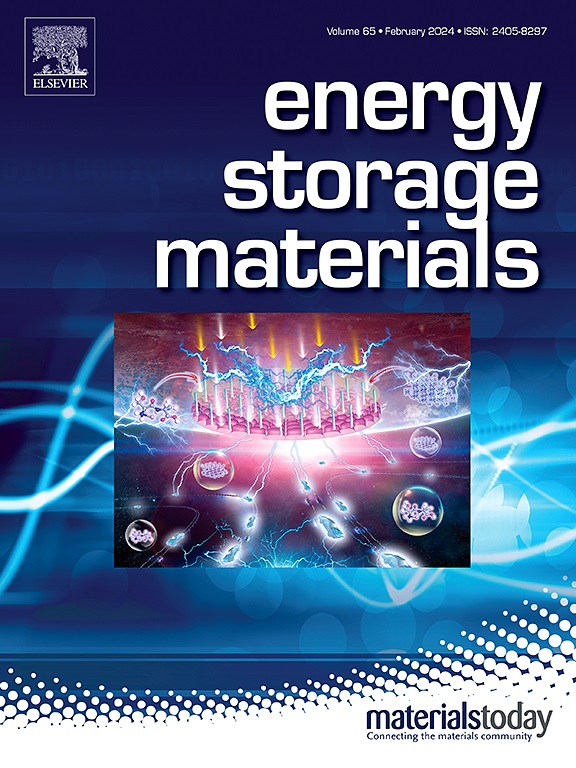二维 Ⅳ-Ⅴ 复合单层:钠离子电池阳极应用的第一原理启示
IF 18.9
1区 材料科学
Q1 CHEMISTRY, PHYSICAL
引用次数: 0
摘要
本文章由计算机程序翻译,如有差异,请以英文原文为准。
Two-dimensional Ⅳ-Ⅴ compound monolayers: first principles insights for sodium ion battery anode applications
Two-dimensional materials have acquired considerable concerns in sodium-ion batteries although there are some challenges involving the number of active sites and structural stability. In this present contribution, the electrochemical nature of proposed GeSiP2 and GeSiSb2 monolayers as anode materials are systematically predicted through first-principles calculations. The results indicate that the compounds have the dynamic and mechanical stability according to phonon dispersion curves and cohesive energies. They are internally bonded by covalent bonds and retain better electrical conductivity after embedding sodium. The lower migration barrier of 0.074 eV from the Hollow site of six-membered ring to that of an adjacent ring can be obtained in the Sb-Si terminal case for GeSiSb2, with the suitable diffusion coefficient of 0.69 × 10-3 cm2/s. Additionally, there are lattice constant changes of 13.7% and 3.89% after adsorption of the maximum Na atom concentration for GeSiP2 and GeSiSb2, respectively, ensuring structural stability during cycling. Moreover, the maximum theoretical specific capacities of 988.58 mAh/g and 467.14 mAh/g, with suitable average open-circuit voltages of 0.48 V and 0.37 V, respectively, can be determined. All these findings illustrate that these two compounds display great potential as electrode materials for metal-ion batteries in the field of energy storage.
求助全文
通过发布文献求助,成功后即可免费获取论文全文。
去求助
来源期刊

Energy Storage Materials
Materials Science-General Materials Science
CiteScore
33.00
自引率
5.90%
发文量
652
审稿时长
27 days
期刊介绍:
Energy Storage Materials is a global interdisciplinary journal dedicated to sharing scientific and technological advancements in materials and devices for advanced energy storage and related energy conversion, such as in metal-O2 batteries. The journal features comprehensive research articles, including full papers and short communications, as well as authoritative feature articles and reviews by leading experts in the field.
Energy Storage Materials covers a wide range of topics, including the synthesis, fabrication, structure, properties, performance, and technological applications of energy storage materials. Additionally, the journal explores strategies, policies, and developments in the field of energy storage materials and devices for sustainable energy.
Published papers are selected based on their scientific and technological significance, their ability to provide valuable new knowledge, and their relevance to the international research community.
 求助内容:
求助内容: 应助结果提醒方式:
应助结果提醒方式:


